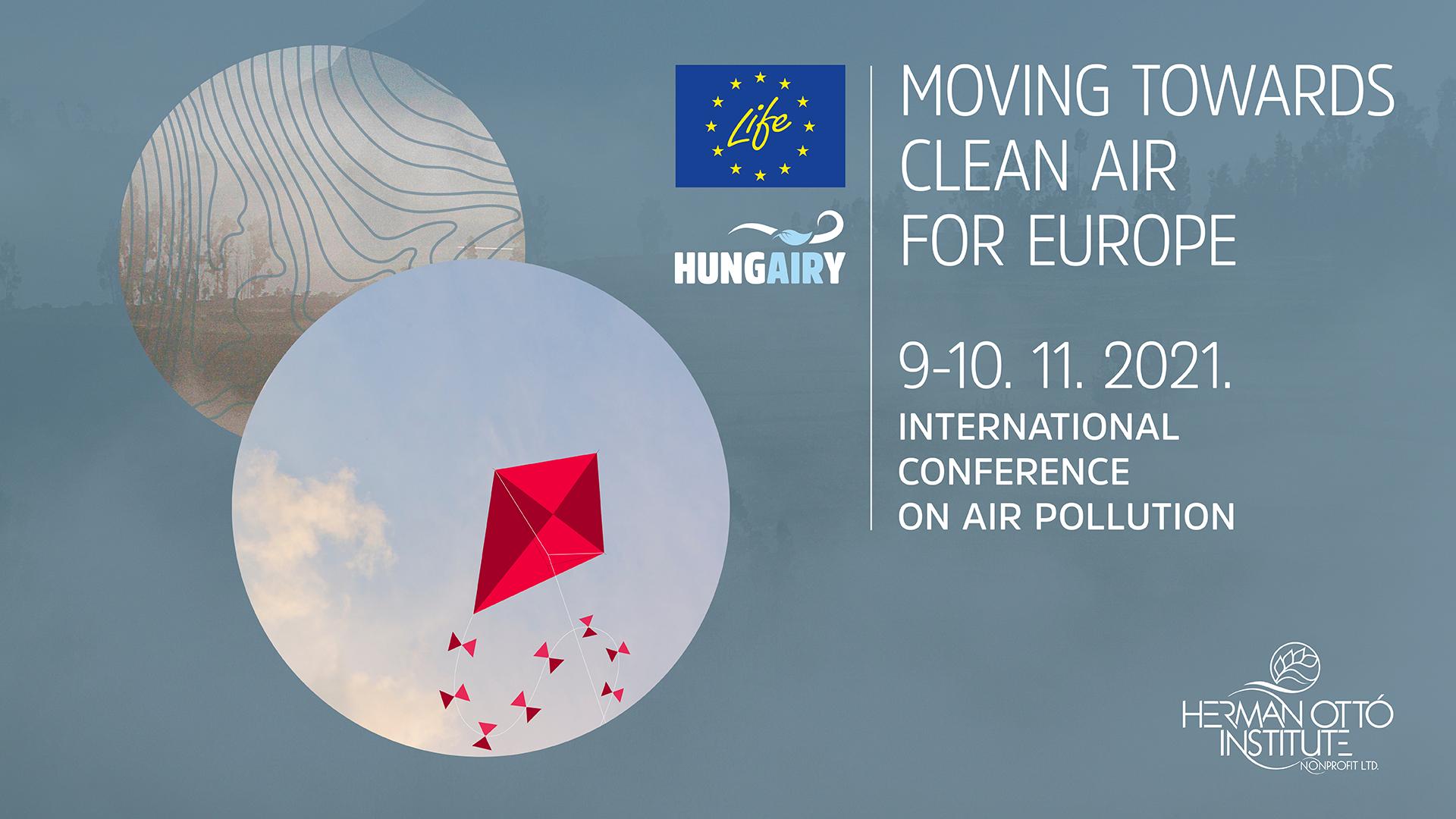Moving towards clean air for Europe

On 9-10 November 2021, Hungary's first environment-related LIFE Integrated Project, HungAIRy, held an international conference. It was organised by the project's coordinating beneficiary, Herman Ottó Institute Nonprofit Ltd. During the online event, European projects presented their activities, achievements and experiences in improving air quality.
The first day of the event started with opening speeches.
Péter Bozzay, Managing Director of Herman Ottó Institute Nonprofit Ltd. welcomed the participants of the international conference. He briefly presented the main activities of the company and the main objectives of the HungAIRy LIFE integrated project, which is coordinated by Herman Ottó Institute Nonprofit Ltd. and aims to improve air quality in different regions of Hungary.
In his welcome speech, Dr. Hunor Orbán, Head of the Environmental Protection Department of the Ministry of Agriculture, highlighted that high concentrations of small aerosol particles (commonly known as particulate matter) are a major problem in Central Europe. The main source of pollution is domestic heating. Despite knowing the source of the problem, it is difficult to reduce emissions. The socio-economic situation of the population, inadequate insulation of buildings, lack of availability of good quality fuels, inadequate attitudes of the population all make a successful solution difficult.
Fabio Leone, Regional Director of the European Climate, Environment and Infrastructure Executive Agency (CINEA), highlighted that between 2014 and 2020, the EU LIFE programme has supported 43 projects directly aimed at improving air quality and 102 indirectly. A total of 5 integrated projects have been funded so far, including the HungAIRy project. He stressed that LIFE Integrated Projects play an important role in facilitating the implementation of air quality plans, bringing stakeholders closer together. Finally, he drew attention to current and future opportunities for funding.
In his welcome speech, Guido de Wilt, policy expert of the European Commission, stressed that it is important for the staff of projects working on air quality to get to know each other's work and learn from each other. He expressed his pleasure that this conference had been organised to provide a space for knowledge exchange.
There were 1-1 plenary presentations on each day of the conference:
On 9 November, European Commission policy expert Guido de Wilt presented the details of the European Green Deal, in particular the EU Action Plan: Towards Zero Pollution for Air, Water and Soil.
On 10 November, World Health Organization (WHO) expert Roman Perez Velasco presented the main points of the WHO Air Quality Guidelines 2021, published in September the same year, and the whole process from target to finalisation. The new air quality guidelines are ambitious and faithfully reflect the significant impact of air pollution on global health.
It was a particular pleasure to have representatives from all 5 LIFE IPs for air quality present at the event, presenting their objectives, project progress and key achievements. The results of the HungAIRy project, launched on 1 January 2019, were presented to the conference by Dr. Tamás Szigeti, Project Lead Expert.
A total of 88 participants attended the two days of the conference, with 20 presentations in addition to the plenary sessions and 4 e-posters. The international character of the conference is demonstrated by the fact that speakers came from 11 countries.
The presentations at the conference covered the main sources of air pollution:
- emissions from residential sources,
- the transport sector,
- agricultural activities.
Besides presenting the problems, the experts also presented a number of solutions and their own experiences.
The attendees heard about the importance of involving the public in air pollution investigations, in identifying problems and finding solutions (citizen science). The use of low-cost sensors to measure air quality is becoming more common. Several examples of their use were presented.
They also saw how green areas were being developed to reduce air pollution in different countries across Europe.
The two-day event was a resounding success, judging by the feedback. It became clear that there is a need for platforms where knowledge and experience can be exchanged between projects working on air quality in different countries.
The presentations are available on this page.
The abstracts of the conference presentations can be downloaded here.